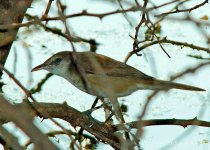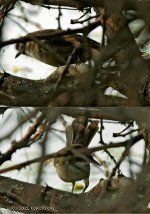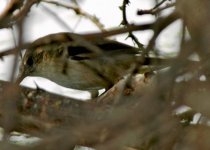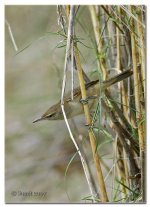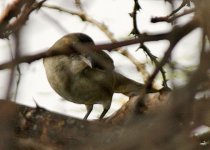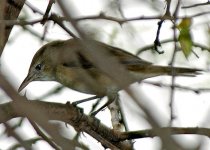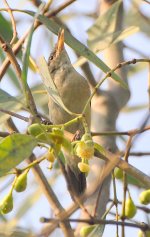Hi Folks,
Those who have seen image uniddacro1.jpg have ID'd it as a Clamorous Reed Warbler. I saw the bird in the field and aside from: 1) behaving unlike a Clamorous (bird skulked at the water's edge and did not call or fly across to a higher perch when disturbed), 2) being larger looking, and 3) being found at a city park where no Clamorous has ever been recorded before, I am uncomfortable with the jizz being similar to Clamorous, a bird I see often enough.
Would appreciate views of members with wider experience.
>>Single bird seen on two days at the same place at a city park with a waterbody, Kolkata city, eastern India.
>>January/February 2005.
>>Clamorous and Oriental Reed (rare) are the only large acros recorded in the area though Great Reed (a. arundinaceus) is said to occur as a vagrant (though this is disputed)
I have a couple of additional images that can be shared should those be needed.
Cheers!
sumit
Those who have seen image uniddacro1.jpg have ID'd it as a Clamorous Reed Warbler. I saw the bird in the field and aside from: 1) behaving unlike a Clamorous (bird skulked at the water's edge and did not call or fly across to a higher perch when disturbed), 2) being larger looking, and 3) being found at a city park where no Clamorous has ever been recorded before, I am uncomfortable with the jizz being similar to Clamorous, a bird I see often enough.
Would appreciate views of members with wider experience.
>>Single bird seen on two days at the same place at a city park with a waterbody, Kolkata city, eastern India.
>>January/February 2005.
>>Clamorous and Oriental Reed (rare) are the only large acros recorded in the area though Great Reed (a. arundinaceus) is said to occur as a vagrant (though this is disputed)
I have a couple of additional images that can be shared should those be needed.
Cheers!
sumit
Attachments
Last edited:




